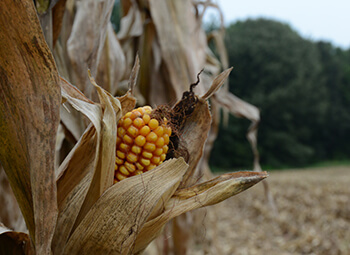Managing Nitrogen
Dec 16, 2019

WinField United® agronomist Mark Glady shares his insight on effectively managing nitrogen in corn crops.
Nitrogen management in corn crops is challenging for a number of reasons, one of which is nitrogen’s chemical properties: When in nitrate form, nitrogen is water-soluble, meaning it moves easily with water. If a field receives moderate to heavy rainfall and an abundance of water is moving down through the soil profile, nitrate can easily leach out of the profile along with that water.
Since weather conditions and rainfall volumes are difficult to predict, one way to manage nitrogen is to collect data periodically throughout the growing season using various tests and technology. Here are some tools that can help you make sure your nitrogen is staying where you want it to and not moving off track.
1. Soil sampling
Using a pre-sidedress nitrate test (PSNT) soil sample is one tool that can provide insight into the level of nitrate present at the V5 growth stage. Work with your local trusted advisor to do this just prior to the grand growth phase of corn, when plants have a high demand for nitrogen.
2. Tissue testing
Tissue testing provides a second piece of data to evaluate how much nitrogen is present in the plant at any given time. NutriSolutions® tissue testing lets you gauge the amount of nitrogen and other nutrients your corn plants are taking up. This lets you correct any deficiencies promptly and accurately.
3. Crop modeling
Crop models like the R7® Field Forecasting Tool provide insight into what nitrogen availability looks like for corn on any given field. Models are not perfect, but they do provide a look into the nitrogen sufficiency status of corn during the season. Postseason, the Field Forecasting Tool allows you to review the plant’s uptake throughout the year. Running different scenarios lets you know what you could have done differently during the past season and how to plan for the year ahead.
4. Stalk nitrate test
A stalk nitrate sample is a kind of “nitrogen report card” you can get at the end of the season. It lets you know if your corn plants had enough soil nitrogen available to them, or if they were short and had to “rob” nitrogen from the stalk. This allows you to recalibrate your nitrogen management decisions for next season.
5. Nitrogen stabilizers
No matter the source of your nitrogen, it has the potential to be lost from soil via leaching and denitrification. Help protect your investment with a nitrogen stabilizer. Nitrogen stabilizers can slow the conversion of urea or ammonium to nitrate, which helps keep nitrogen in the root zone longer.
Better together
It’s hard to manage nitrogen throughout the season using just one of these methods. It’s when they’re used together that you derive the most benefit. The sooner you can detect whether your corn plants have adequate nitrogen, the sooner you can tackle problems. You can also have greater confidence in your nitrogen management strategy and more assurance in the recommendations your advisor makes, given test results.
For more information about nitrogen management, contact your local Co-op agronomist.